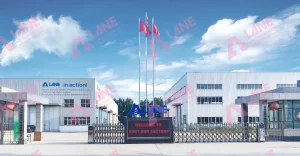Release time:2025-10-11 popularity:407
Stainless steel mixing tank is one of the most essential components in modern chemical reactor systems, providing precise control over mixing, blending, heating, and reaction processes. Its high durability, excellent corrosion resistance, and hygienic construction make it suitable for industries ranging from fertilizer and chemical manufacturing to pharmaceuticals and food processing. In chemical production environments, the efficiency and safety of a process often depend on the reliability of the mixing system. This article explains the design, structure, and working principles of stainless steel mixing tanks, helping engineers and plant operators optimize performance, ensure consistent product quality, and maintain safe operation.
A stainless steel mixing tank is an industrial vessel specifically designed to mix liquids, slurries, or semi-solid materials while maintaining strict process control. These tanks can operate under atmospheric or pressurized conditions, and often work in conjunction with reactor vessels to prepare or maintain reaction mixtures.

Tank body and cover : made of SS304, SS316, or SS316L stainless steel.
Agitator or impeller : for effective fluid mixing.
Motor and gearbox : to drive rotational motion.
Heating or cooling jacket : to regulate temperature.
Valves, sensors, and discharge ports : for monitoring and material handling.
Each of these components contributes to maintaining consistent quality, ensuring that physical and chemical parameters remain stable throughout operation.
Within a chemical reactor system, the stainless steel mixing tank performs pre-mixing, heating, and stabilization. It ensures that reactants reach the required temperature, pH, and concentration before entering the reactor. Proper mixing minimizes incomplete reactions and enhances yield.
In fertilizer production, it supports acidulation and neutralization steps; in pharmaceutical and cosmetic lines, it ensures sterility and precise dosage control; and in food industries, it promotes uniform texture and flavor blending. Overall, it bridges the gap between raw material preparation and controlled reaction processes.
The performance of a stainless steel mixing tank depends on its material, structure, and mixing technology.

Internal baffles improve turbulence and eliminate dead zones, enhancing overall mixing efficiency. Optional features include heating jackets, insulation layers, and pressure-resistant lids to meet diverse industrial requirements.
The stainless steel mixing tank operates through mechanical agitation and thermal control. When materials are added, the agitator rotates to create flow and turbulence, promoting uniform mixing. The jacket regulates heating or cooling through circulating media such as steam or chilled water.
Modern tanks integrate automated sensors to monitor temperature, pressure, and speed in real time. The system adjusts operating parameters automatically, ensuring consistent quality. After achieving the desired homogeneity or reaction level, the product is discharged for downstream processing.
A stainless steel mixing tank offers multiple advantages for chemical and industrial applications. Its high corrosion resistance allows it to safely handle acids, bases, and solvents, while its robust construction ensures long-term durability under heat and pressure. The smooth, polished inner surface makes cleaning easy, maintaining hygiene and preventing contamination during production. In addition, it integrates seamlessly with automated control systems such as PLC or DCS, enabling precise process monitoring and improved efficiency. Equipped with relief valves, grounding systems, and overload protection, the stainless steel mixing tank ensures safe and reliable operation, making it the preferred choice for industries that demand precision, consistency, and safety in their processing systems.
Maintenance and Safety Guidelines: To ensure reliable performance, a stainless steel mixing tank should undergo regular maintenance. Seals, bearings, and gaskets must be inspected for wear. Internal cleaning after each batch prevents material buildup. Motor and gearbox lubrication extend service life, while sensors should be calibrated periodically. Safety measures include observing rated temperature and pressure limits, using grounding to prevent static discharge, and following lockout procedures during maintenance. Compliance with ASME, ISO, and GMP standards ensures both safety and product consistency.
Selecting the right supplier for a stainless steel mixing tank ensures process reliability and quality assurance. Manufacturers should provide customization options for capacity, agitator type, and control integration. Certifications such as ASME, CE, and ISO 9001 demonstrate compliance with international standards. Henan LANE Heavy Industry specializes in designing and manufacturing stainless steel mixing tanks and chemical reactor systems. With advanced fabrication technology and engineering experience, LANE offers durable, efficient, and cost-effective solutions for fertilizer, chemical, and industrial sectors.

The stainless steel mixing tank is a cornerstone of modern chemical reactor systems, combining robust design, efficient operation, and precise control. By understanding its structure, working mechanism, and maintenance needs, manufacturers can improve production efficiency and product quality. Partnering with reliable suppliers ensures access to innovative equipment that supports sustainable and high-performance industrial operations.
For more details, please feel free to contact us.
Henan Lane Heavy Industry Machinery Technology Co., Ltd.
Email: sales@lanesvc.com
Contact number: +86 13526470520
Whatsapp: +86 13526470520